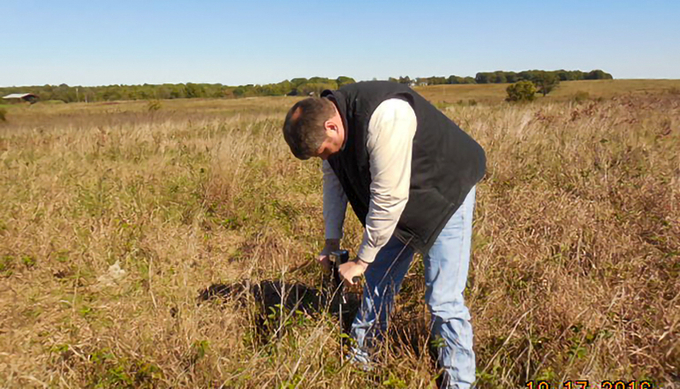November 27, 2025 | 22:01 GMT +7
November 27, 2025 | 22:01 GMT +7
Hotline: 0913.378.918
November 27, 2025 | 22:01 GMT +7
Hotline: 0913.378.918
He recommends testing every three or four years. “If you’re not soil testing, you’re already behind,” he said on March 7 at the Christian County Livestock and Forage Conference in Clever, Missouri. Know what you need when you order fertilizer to avoid a shotgun approach.

Photo courtesy University of Missouri Extension.
Although 2023 fertilizer prices are down from last year, prices are still high enough that a soil test can pay off. See the MU Extension publication “Soil Sampling Hayfields and Row Crops” at this link.
Grazing and haying affect nitrogen levels differently.
Cows that graze pastures recycle nitrogen through the soil with their manure and urine. Legumes that grow in grazed pastures also add nitrogen to the soil. Hay, on the other hand, removes nutrients. “Your grazing management plan is a fertilizer plan,” Schnakenberg says.
Both how we graze and how we feed hay can serve as effective ways of fertilizing the livestock farm and ranch, he says. Move bunks, rings, or roll-out areas around so that cows distribute manure to other parts of the farm. MU research has also confirmed that a well-planned rotational grazing system greatly helps manure distribution in pastures.
Soil tests can help prevent buying and applying unneeded fertilizer. That’s good for the checkbook and the environment, says Schnakenberg.
Schnakenberg offers several other tips to save money on fertilizer:
Legumes such as clovers are also good long-term sources of nutrients. They fix nitrogen for grass hay crops. Incorporate these legumes into pastures to potentially eliminate the need for nitrogen. Legumes take time to reach their full potential, especially if broadcast over the winter or sowed in the spring.
When prices rise, apply phosphate and potash in the fall or early winter. There is little to no loss, and there may even be benefits from early application because there is time to work nutrients into the upper soil profile, where roots can fully access them when needed next year.
Check with your county extension center for the availability of soil testing equipment for loan.
(KTTN)

(VAN) A new study reveals how the simultaneous effects of ocean acidification, salinity and loss of oxygen are making the world more fragile.

(VAN) Hopes are growing that the creation of the first 3D turkey gut model could be a turning point in the battle against the virulent blackhead disease.

(VAN) Tyson, America’s biggest meat supplier, plans to shutter one of its largest beef processing plants as the industry continues to struggle with low cattle supplies and political pressure from Washington.

(VAN) New FAO study shows how digital solutions are empowering farmers and fishers to prevent losses and build resilient agrifood systems.

(VAN) Brazil's COP30 presidency pushed through a compromise climate deal on Saturday that would boost finance for poor nations coping with global warming but that omitted any mention of the fossil fuels driving it.

(VAN) Poultry farmers in the UK have been warned that they could face one of the worst winters yet for bird flu.

(VAN) Prices of main-crop paddy have risen sharply, with jasmine rice hitting 16,100 baht per tonne — the highest level in years.